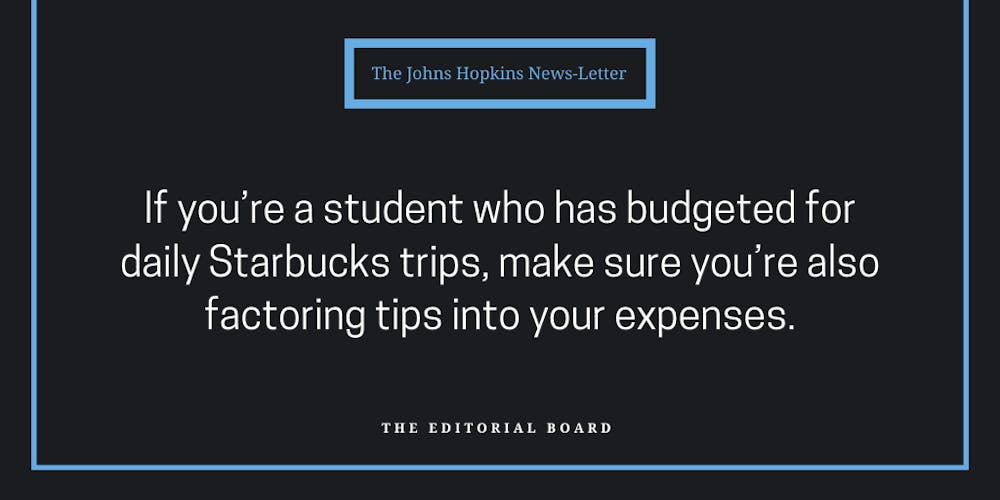Have you ever checked out at Brody Cafe and, with a long line snaking behind you, been presented with an iPad asking: “Add a tip?” As the tip options appear before us and we’re forced to make a decision in a few seconds, the pressure to get out of line quickly creeps in.
What is the expectation when it comes to tipping? Should we tip 20% when a barista prepares a drink but nothing when we grab a bag of chips ourselves? Sometimes, it might feel like we are simply shutting our eyes and pressing any button just to finish the payment process.
Tipping used to be more straightforward. Consumers knew to adhere to strong tipping norms like adding 20% to restaurant checks or a dollar for every beer in a bar. Now, with the ubiquity of the iPad swivel in places like bakeries and farmer’s markets, there’s greater confusion about when tipping is an expectation and when it’s just a nicety.
For example, New York magazine recommends tipping between 20-25% percent for Uber rides, table service in a restaurant, coffee, cocktails, haircuts and more. However, attitudes toward tipping vary widely. For those who frequently engage with the service industry, it’s worth having a conversation about what our tipping habits should be.
Some customers say the more frequent tip prompting has made them feel pressured to leave a tip, even in situations where it isn’t typical, like the ticket counter of a movie theater. Others say they developed “tipping fatigue,” where consumers feel as if they are being asked to pay more and more. Some criticize the practice of tipping in general, arguing that it allows employers to shirk the responsibility of paying their workers decent wages.
During the pandemic, the use of Uber Eats and other online delivery services created a buzz around delivery drivers as they became perceived as essential workers. Content creators circulated posts supporting these individuals, hailed as heroes. While delivery drivers benefited from increased tipping at the start of the pandemic, consumers are not as willing to continue this trend.
The issue of tipping service workers should be especially relevant to college students, who eat out frequently. The average college student spends $410 a month eating off campus. Whether it’s for convenience or the opportunity to grab a meal with friends, we’re interacting with tipped employees more than we might realize. Think about it: How often does a Hopkins student go to Donor Bros, Chipotle or Honeygrow? We may be hitting “No Tip” on an iPad too often and with too little thought.
We’ll be honest. We don’t like that we have to tip — we believe service workers should be paid sufficiently and consistently by their employers. The onus shouldn’t be on consumers to make sure their waitress or bartender has enough income to pay rent.
Tipped workers in the U.S. are nearly twice as likely to live in poverty as untipped workers. Additionally, they suffer from a lack of control over their hours, often have insufficient benefits and deal with hostile customer interactions. In several other countries, it isn’t a social requirement to tip service staff because they make living wages to begin with.
Given the history behind the culture of tipping in this country, the poor working conditions of tipped employees should come as no surprise. Tipping began in the U.S. during Reconstruction, when hospitality companies paid formerly enslaved people extremely low wages, if any, and encouraged customers to leave tips.
Though we hope the U.S. will one day follow in the footsteps of other countries, as of now, it is still legal to pay tipped wages of a few dollars. In Maryland, tipped employees can be paid a rate of $3.63 an hour as long as employers expect their total earnings will meet the state minimum wage.
Hopkins students, especially those with more disposable income, should keep the wealth disparity between our student body and the wider Baltimore community in mind. If you’re a student who has budgeted for daily Starbucks trips, make sure you’re also factoring tips into your expenses. Whatever your spending habits may be, opening up a dialogue about tipping with your friends could be beneficial for seeing different perspectives on the practice.





